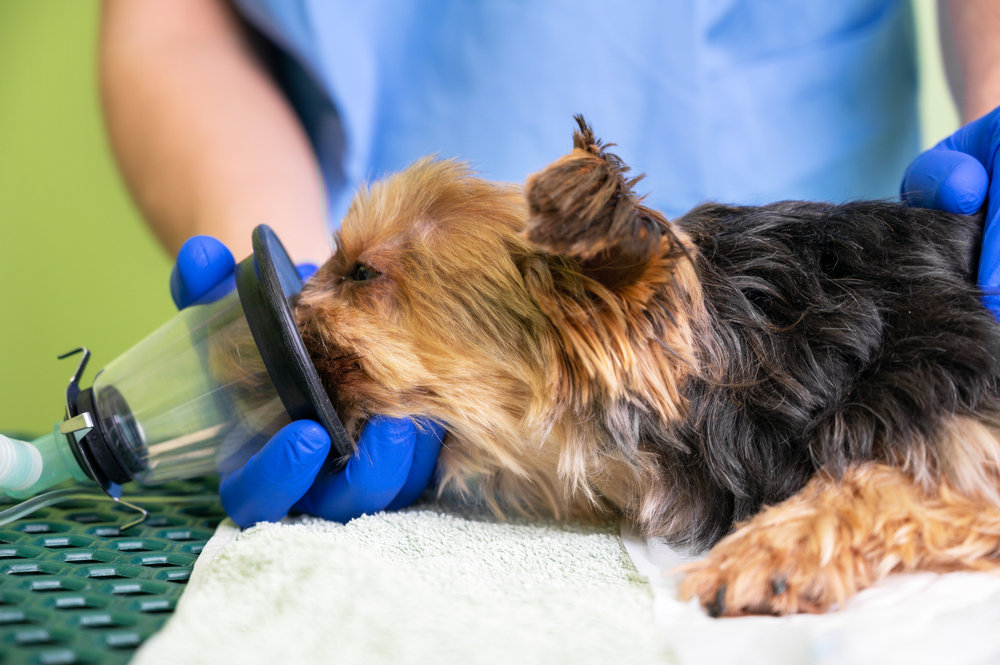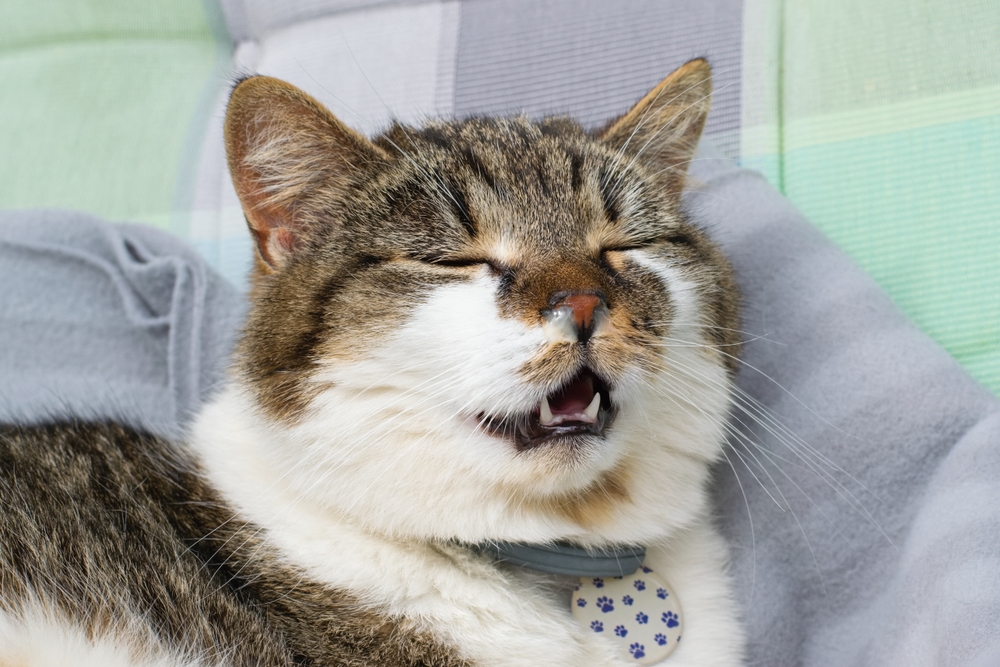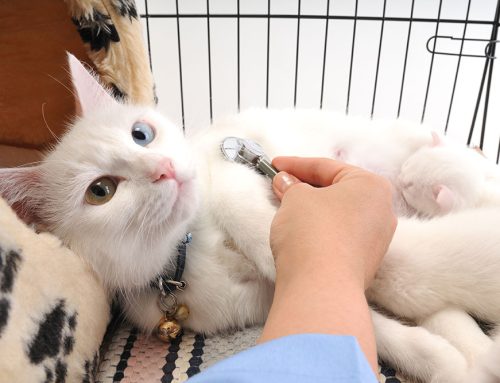Feline Asthma: How to Recognize the Symptoms and Protect Your Cat’s Health
Feline asthma is one of the most common respiratory conditions in cats, yet many owners are surprised to learn how subtle its first signs can be. What starts as occasional coughing or wheezing can progress to severe breathing difficulty if not addressed- and without proper management, asthma can become life-threatening. Understanding how asthma develops and how it affects cats is essential for keeping them safe and comfortable.
At Skyway Animal Hospital, we know that every pet’s story is unique, and so is every treatment plan. Our mission is to help families recognize early signs of feline asthma, understand how it is diagnosed, and explore the treatment and home care options that keep cats breathing easier.
What Happens in a Cat’s Airways During Asthma?
Asthma in cats occurs when the immune system overreacts to inhaled allergens like dust, smoke, or pollen. The airway walls swell, mucus builds up, and the surrounding muscles tighten. This combination narrows the passages where air should flow freely, making breathing difficult.
This condition often overlaps with chronic bronchitis in cats. Both cause long-term airway inflammation and can appear nearly identical on X-rays, which is why careful veterinary evaluation is so important.
Asthma cannot be cured, but with individualized treatment, most cats live long, active lives with well-controlled symptoms. Some may only experience flare-ups occasionally, while others require daily care to prevent attacks.
The Warning Signs: Symptoms of Feline Asthma
Feline asthma symptoms are often subtle at first and easy to mistake for other problems. Cats may:
- Cough or hack, often in a crouched posture that resembles retching
- Breathe rapidly or take shallow breaths
- Wheeze or make whistling sounds while inhaling or exhaling
- Show reduced energy or reluctance to play
- Display an increased breathing rate while resting
- Pant with an open mouth, which is a veterinary emergency
During more serious episodes, cats may extend their neck and squat low in an effort to take in more air. Signs of respiratory distress such as labored breathing, blue gums, or collapse mean your cat needs immediate veterinary help.
Flare-ups can also have seasonal patterns or may worsen with exposure to dust, smoke, aerosols, or perfumes. Identifying these triggers helps families reduce attacks at home.
Other Conditions That Can Look Like Asthma
Because coughing and labored breathing are not unique to asthma, ruling out other conditions is critical.
- Upper respiratory infectionsc in cats often cause sneezing, nasal discharge, and congestion, but may also involve coughing.
- Heart discease can cause fluid accumulation in or around the lungs, producing wheezing and breathing problems.
These illnesses require different treatment approaches. That is why accurate testing is essential for determining whether a cat truly has asthma.
How Vets Confirm the Diagnosis
At Skyway Animal Hospital, we provide comprehensive diagnostic services to identify the source of breathing difficulties. Testing may include:
- Chest radiographs (X-rays) to reveal lung changes or airway thickening
- Bloodwork to evaluate inflammation and detect infection
- Ultrasound to investigate potential heart disease
- Airway sampling or bronchoscopy in certain advanced cases
In addition, owners may be asked to track their cat’s breathing at home. Recording a resting respiratory rate provides valuable insight into whether a cat is improving or if a flare-up may be developing.
Treatment Paths: Medications and Inhalers
There is no permanent cure for feline asthma, but the condition can be managed effectively with the right treatment plan. The goal is to reduce airway inflammation, open the breathing passages, and minimize the frequency of attacks.
- Corticosteroids are the primary medication for asthma management. They calm inflammation inside the airways and may be prescribed as oral tablets, liquid formulations, injections, or inhaled treatments.
- Bronchodilators help by relaxing the muscles around the airways, which improves airflow. These medications are typically used in combination with corticosteroids for the best results.
Many cats do best on inhaled therapy. The AeroKat chamber allows cats to safely receive medication through a facemask designed specifically for feline use. Inhaled treatments deliver medicine directly to the lungs with fewer side effects compared to oral or injectable options.
Treatment plans vary widely. Some cats require daily medication, while others only need therapy during flare-ups. Our veterinary team helps families find the right approach for their cat’s specific health needs and lifestyle.
Creating a Safer Home for Cats with Asthma
Environmental management can reduce how often flare-ups occur. Steps to support respiratory health include:
- Choosing low-dust litter to limit airborne particles
- Keeping the home smoke-free and avoiding aerosols or heavy perfumes
- Using air purifiers and cleaning regularly to reduce dust and dander
- Reducing stress through routine and enrichment activities
- Helping cats maintain a healthy weight through diet and activity
Small adjustments at home often make a significant difference in comfort and long-term control of asthma symptoms.
Emergency Situations: What To Do During an Asthma Attack
An asthma attack can escalate quickly, which is why knowing how to respond matters. Urgent signs include:
- Open-mouth breathing
- Blue or gray gums
- Weakness, collapse, or unresponsiveness
These are signs of respiratory distress- emergencies that require immediate veterinary intervention. During regular hours, Skyway Animal Hospital offers emergency services. After hours, we partner with nearby emergency hospitals so pets can receive care right away. If you notice these signs, call Skyway or go to your nearest veterinary emergency room.
The Long-Term Outlook
Although asthma is lifelong, most cats live comfortably for many years with proper care. Regular wellness and preventative visits allow veterinarians to adjust medication as needed and monitor for changes.
Owners play an essential role by giving medications consistently, watching for triggers, and tracking changes in breathing. With the right balance of home care and veterinary support, cats with asthma often live just as long as cats without the disease.

Helping Cats Breathe Freely Again
Feline asthma may sound overwhelming, but it is highly manageable with early recognition, accurate diagnosis, and a tailored treatment plan. By combining medications, home adjustments, and ongoing monitoring, most cats go on to live happy, comfortable lives.
At Skyway Animal Hospital, we believe your love is what makes you your cat’s hero, and our passion is supporting that bond with exceptional care. If your cat has shown signs of coughing, wheezing, or difficulty breathing, call us today at 727-327-5141 or request an appointment online. Our team is here to guide you through every step of your cat’s care and help them breathe easier again.







Leave A Comment